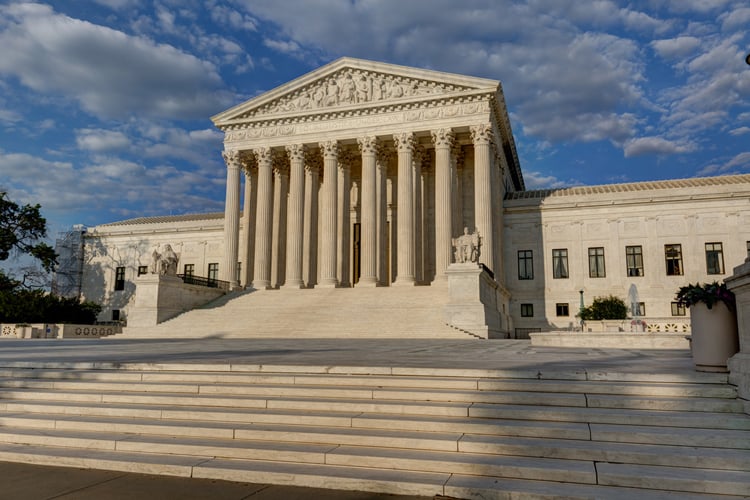Supreme Court doesn't reach the merits in 2 partisan gerrymandering cases

BrianPIrwin/Shutterstock.com.
The U.S. Supreme Court on Monday returned two cases to the lower courts that had contended it is unconstitutional to redraw voting district lines to give an advantage to a political party.
The high court has increasingly struck down redrawn electoral maps because they were designed to reduce the influence of minorities, but it has not decided whether partisan gerrymandering is reason to strike down an electoral map. Monday’s decisions involving redrawn districts in Wisconsin and Maryland leave the question unresolved.
In Gill v. Whitford, the Supreme Court ruled unanimously that the Wisconsin plaintiffs had failed to prove standing, and ruled 7-2 that the case should be remanded to give the plaintiffs a chance to show an injury supporting their standing claim.
In Benisek v. Lamone, the high court upheld the denial of a preliminary injunction in a Maryland case that contended a 2011 congressional redistricting had targeted a Republican in violation of the First Amendment.
The court cases will continue, while others are waiting in the wings, according to press releases by the American Civil Liberties Union and Common Cause. “This is by no means the end of the road,” Common Cause said in its release. “The Supreme Court is still actively looking for the right case to establish a standard for what constitutes an unconstitutional partisan gerrymandering.”
Common Cause pointed to a North Carolina case that is pending.
Chief Justice John G. Roberts wrote the court’s opinion in Gill v. Whitford. He said the plaintiffs had claimed statewide injury to Wisconsin’s Democrats, but that did not establish individual standing.
The plaintiffs had claimed the gerrymander favored Republicans by “packing” Democrats into supermajority districts and by dividing Democrats into multiple districts where they would fall short of a majority, a process known as “cracking.”
Four of the plaintiffs lived in districts said to have been packed or cracked, but they “failed to meaningfully pursue their allegations of individual harm,” Roberts said. Instead they claimed statewide injury to Democrats. They should be allowed to try to prove claims of particularized injury, Roberts said.
Justices Clarence Thomas and Neil M. Gorsuch would have dismissed the case without giving the plaintiffs another chance to prove standing.
Justice Elena Kagan wrote a concurrence to address what kind of evidence the plaintiffs needed to present to support their standing claim. Her opinion was joined by Justices Ruth Bader Ginsburg, Stephen G. Breyer and Sonia Sotomayor.
In Benisek v. Lamone, the Supreme Court upheld the denial of the preliminary injunction in a per curiam opinion.
The court cited three reasons why “the balance of equities and the public interest tilted against” the request for a preliminary injunction.
First, the challengers hadn’t sought an injunction until six years after the 2011 map was adopted. Second, an injunction could have disrupted orderly elections because of time constraints for a new remap. Third was the “legal uncertainty” surrounding partisan gerrymandering.
Politico, USA Today and the Washington Post have coverage of both cases.
Related articles:
ABAJournal.com: Supreme Court to decide whether partisan gerrymandering is constitutional”
ABAJournal.com: “Supreme Court accepts second case on partisan gerrymandering”
ABAJournal.com: “Will Supreme Court issue ‘non-opinion’ in partisan gerrymandering case?”
ABA Journal: “Data scientists help courts grapple with increasingly divisive maps”
ABAJournal.com: “In oral arguments, swing voter Kennedy appears skeptical of partisan gerrymandering”
ABAJournal.com: “Chemerinsky: Some potential blockbusters as new SCOTUS term gets underway”



